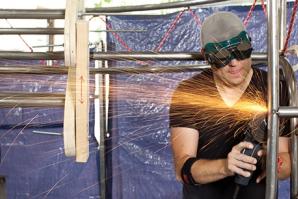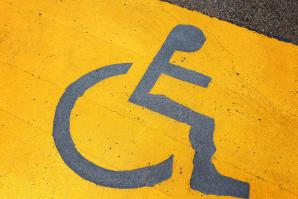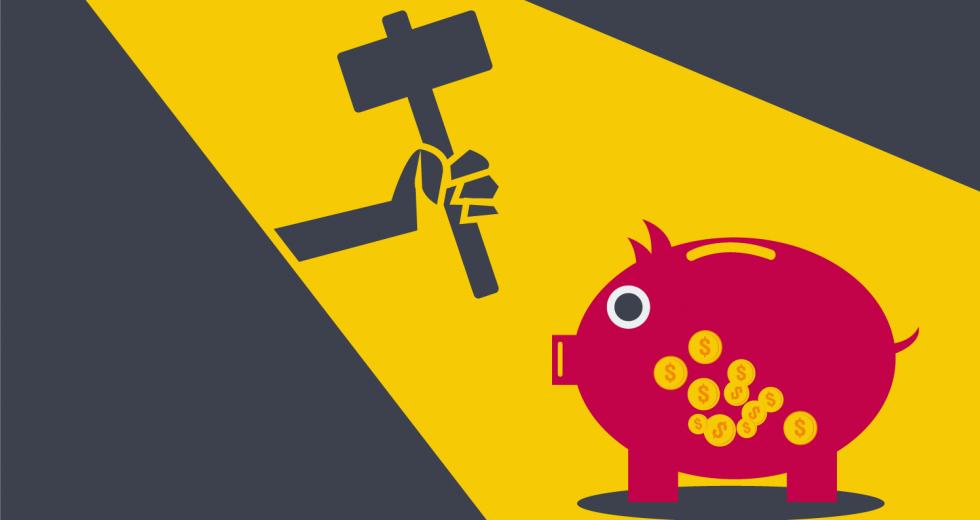The recent King Fire sent thousands of people in the Sierra fleeing from their homes. When they returned, they were joined by folks with whom most people rarely come into contact. A small band of detectives and investigators from the California Department of Insurance were on hand to help traumatized homeowners ward off unlicensed contractors and outright scammers who often prey on disaster victims.
Such unscrupulous vendors are a small part of the so-called shadow economy – the unlicensed contractor for sure, but also a vast black market of businesses, often cash-only, working out of homes or garages, that don’t pay the taxes or licensing fees their competitors do. Even otherwise legitimate businesses get into the act, cheating their employees and the state by misclassifying a dangerous job as something less hazardous so they can pay lower workers’ compensation insurance premiums (or none at all).
While profitable for the person getting away with it, this underground economy hits all of us right where it hurts – in the pocketbook.
“It’s estimated that this shadow economy costs the nation over $1 trillion dollars a year,” says California Insurance Commissioner Dave Jones. “Since California is such a big part of the national economy, we’re talking about literally billions of dollars taken out of our own economy.”
Jones has made combating such nefarious practices a priority for his administration. It’s an incredibly challenging job. With roughly $245 billion a year in premiums collected every year, California is the world’s sixth largest insurance market. To help keep tabs on the bad guys, the DOI regularly works with other state law enforcement agencies to inform and educate business owners of their responsibilities under state law. One recent sweep resulted in over 80 citations and more than $135,000 in fines.
New challenges abound as well. Notable among them are other economic offshoots such as technology-driven “sharing economy” companies like Uber, Lyft, Airbnb, TaskRabbit and DogVacay. One of the biggest battles at the Capitol this year revolved around how much insurance rideshare drivers should carry and when they need to have it.
With a big push from Gov. Jerry Brown, lawmakers eventually settled on a convoluted system that requires rideshare drivers to have a “stepped” insurance policy: one that ranges from $200,000 in liability, which covers them from the time they turn on their phones and begin looking for ride requests, and then escalates to $1 million from the time the driver accepts the request through when they drop their customer off and stop looking for new ones. It was far from the solution Jones was hoping for, but it’s the law.
“In California, we embrace new innovation,” he says. “But in my job, we have to balance both the need for innovation and the need to protect consumers.”
Check back next week for Rich Ehisen’s full interview with California Insurance Commissioner Dave Jones. Sign up for our weekly newsletter, and we’ll let you know when it’s online.
Recommended For You

Independents’ Day
Look out 9-to-5, the freelancers are coming
Casey Marshall is hunched over his phone, furiously scrolling through his Twitter feed in search of a photo of Waste Management’s promotional robot, whose broken axle he fixed back in March. “Someone came into the Hacker Lab and needed his robot repaired,” he says, grinning, “and I was like, ‘I gotta do that.’”

So Sue Me (But Please Don’t)
Our law librarian offers resources for ADA compliance
I own a small women’s apparel boutique. The neighboring sandwich shop just was served with a federal lawsuit regarding ADA compliance. I am concerned I could be next. This building is very old. Is anything “grandfathered in”? What can I do to protect myself?

Convenient Care
How concierge medicine is changing the health care marketplace
Think of your best friend, a friend that knows all your ticks, hobbies and vices. Now imagine this friend happens to be a doctor, and she’s your doctor.



